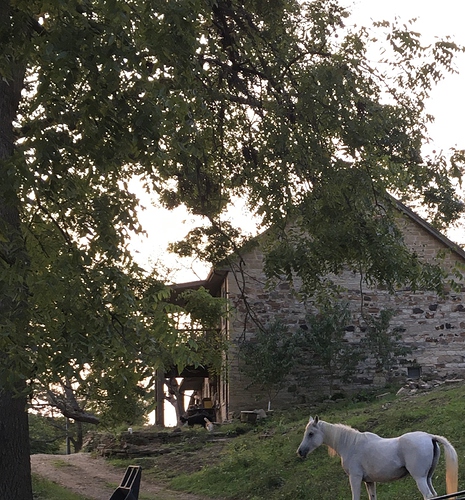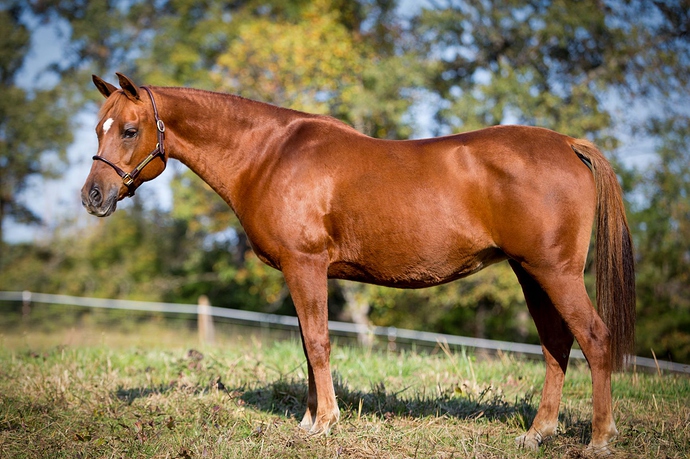I am probably wrong but she might be Gainey bred–Azraff crossed with Ferzon mares (Crabbet breeding plus Polish through *Raffles and *Raseyn, Crabbet-bred sons of the Polish stallion Skowronek).
Or she might be Polish/Polish cross, or have both groups in her ancestry.
It can be hard to say because most Arabians share some of the same ancestors if you go far back enough in the pedigree.
She has wonderful withers! I do suspect that if she is not reliable under saddle that her trainers did not use a saddle that was comfortable for her withers and/or did not do enough proper exercising to muscle up her loin.
If you ever decide to start riding her I would do a lot of slow steady work on hills.
In spite of my handicaps I have gotten good result with two “spirited” Arabians who were essentially “dumped” at my lesson stable. They were not trained properly to develop the muscles necessary to carry weight easily. They had super sensitive mouths (compared to most horses) and they responded well to my Forward Seat riding and schooling. They turned out to be dependable horses for me and they took care of me when I was on their backs even when I was suffering an MS exacerbation complete with HORRIBLE balance, incoordination, bad proprioceptive sense and inability to properly coordinate my aids. Both of these horses would invert when I first rode them, both of these horses would bolt if their rider irritated them enough (as in use as a lesson horse) but they responded with relief to my sane, gentle training and riding, totally stopped inverting when I rode them and they never bolted with me.
With my MS I have found that it really helps if I explain to the Arabians, before I mount, all my physical problems, along with a solemn vow that I will do everything possible to not hurt their mouths, including falling off. They were my lesson horses for several years, then one, a Russian bred gelding, went back to his breeder who finally found him again after looking for a while. The mare, probably mostly Crabbet breeding, is now retired at we think age 38 or so, very arthritic but really happy that she finally has a boyfriend she can hang out with!
But if you don’t want to ride her it is fine. You have an absolutely gorgeous mare to feast your eyes on, and with patience the personal relationship one can have with an Arabian mare is simply marvelous even if you never get up on her back (warning, Arabian mares can be sort of opinionated but they will work with you once they understand).


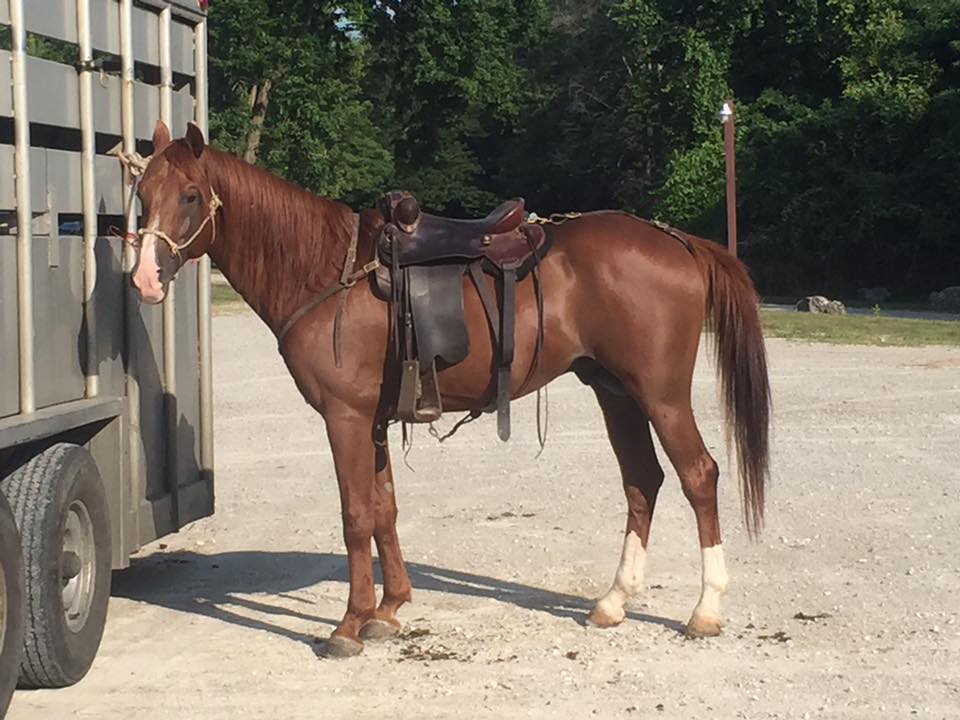
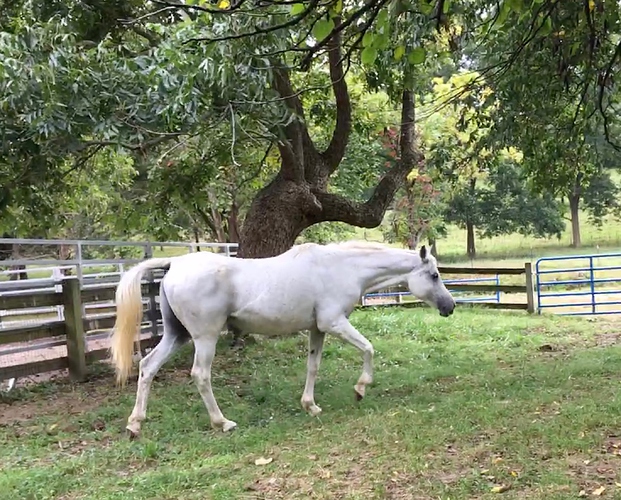
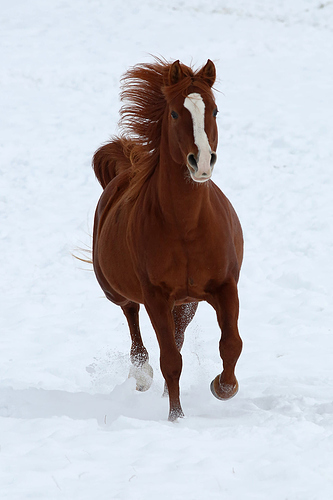
 From my description can you tell anything about her type?..i’ve always thought her to be a generic show-type American Arabian? Here’s another pic of her: (she lives sort of around the house with two other horses i need to keep a close eye on…a Percheron w/bilateral stringhalt and a Morgan mare with Cushings. Why she’s close to the house is because she’s a hard keeper and there is that whole melonoma thing …she has a few small spots
From my description can you tell anything about her type?..i’ve always thought her to be a generic show-type American Arabian? Here’s another pic of her: (she lives sort of around the house with two other horses i need to keep a close eye on…a Percheron w/bilateral stringhalt and a Morgan mare with Cushings. Why she’s close to the house is because she’s a hard keeper and there is that whole melonoma thing …she has a few small spots